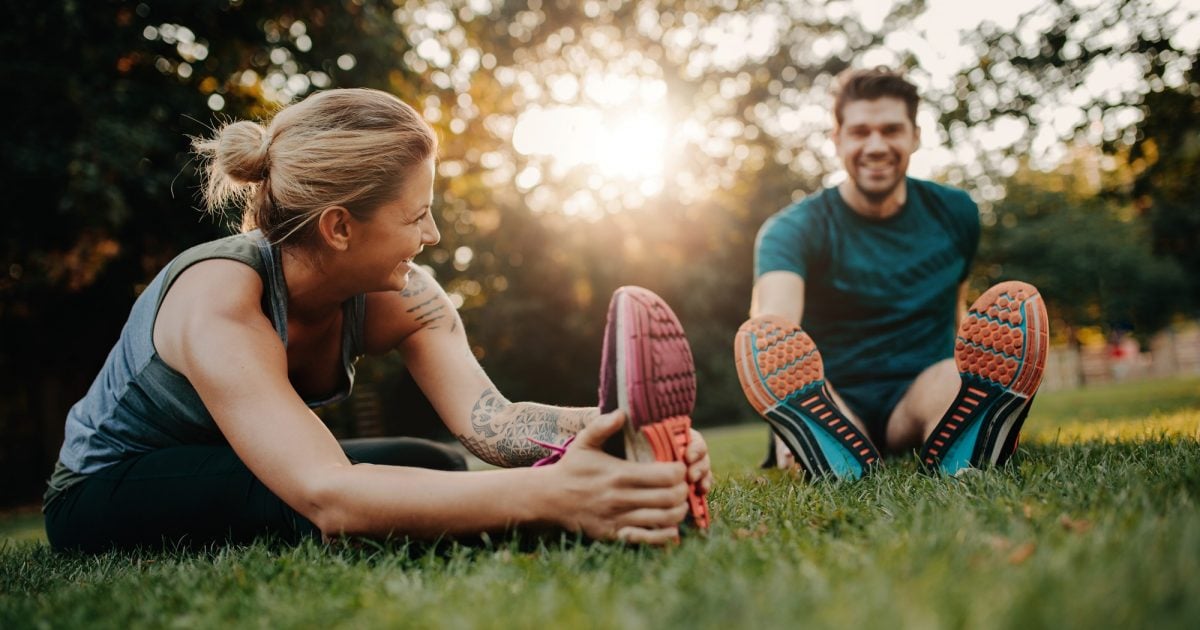Managing Anxiety with Exercise and Physical Therapy (PT)
Managing Anxiety with Exercise and Physical Therapy (PT)

Introduction
Do you find yourself often overwhelmed with worry and unease? Anxiety is a common mental health issue that affects millions of people worldwide, impacting their daily lives and overall well-being. The quest for effective anxiety management has led many to explore various approaches, and one such powerful avenue is the combination of exercise and physical therapy (PT). In this article, we’ll delve into the science behind this dynamic duo and learn how incorporating exercise and PT can significantly alleviate anxiety, allowing you to lead a more balanced and fulfilling life.
While many of these excercies can be done by yourself and at home, we always stress the importance of consulting a qualified healthcare professional before trying any of these exercises. Should you need a personalized review and exercise plan speak to our team at Impact Health and Performance, in Clearwater, Florida. We have been looking after the wellbeing of our clients for over 15 years and are one of the leading physical therapy centers in Florida. should you require assistance at all for your ailments get in touch with us for a free consultation.
Start One Of Our Physical Therapy Programs And Improve Your Health!
Understanding Anxiety
Before we delve into the solutions, it’s crucial to grasp the nature of anxiety itself. Anxiety is more than just feeling nervous occasionally; it’s a complex emotion that can manifest in various ways. Common symptoms include racing thoughts, increased heart rate, muscle tension, and difficulty concentrating. Different types of anxiety disorders, such as generalized anxiety disorder (GAD), social anxiety disorder, and panic disorder, can significantly impact a person’s quality of life. Interestingly, anxiety isn’t just confined to the mind; it can also take a toll on physical health, leading to headaches, digestive issues, and weakened immune systems.
The Science Behind Exercise and Anxiety
Have you ever experienced that rush of happiness and contentment after a good workout? It’s not just a coincidence – there’s solid science behind it. When we engage in physical activity, our bodies release endorphins, neurotransmitters responsible for mood regulation. These natural “feel-good” chemicals help reduce stress and anxiety, giving us that sense of euphoria commonly known as a “runner’s high.” Moreover, regular physical activity has a profound impact on brain health. It promotes neuroplasticity, which is the brain’s ability to adapt and rewire itself, leading to improved cognitive function and emotional resilience.
Exercise Safety and Precautions
Before diving into a new exercise routine, it’s crucial to consult with a healthcare professional, especially if you have pre-existing medical conditions or concerns. Safety should always be a priority to prevent exercise-related injuries. Listen to your body, and if you experience any persistent pain or discomfort during exercise, seek medical attention promptly.
Types of Exercises for Anxiety Relief
When it comes to managing anxiety, exercise offers a powerful and accessible tool that can significantly improve mental well-being. Different types of exercises each contribute to anxiety relief in their own distinct ways, catering to diverse preferences and fitness levels. Let’s explore some of the most effective exercises for alleviating anxiety:
Cardiovascular Exercises
Cardiovascular exercises, often referred to as cardio, are activities that get your heart pumping and increase your breathing rate. These exercises are fantastic for burning off excess adrenaline and tension, two common culprits of anxiety. Engaging in cardiovascular workouts not only boosts your mood but also helps improve cardiovascular health, endurance, and stamina.
Some popular cardiovascular exercises include:
- Running or Jogging: Whether you prefer a brisk jog around the neighborhood or a scenic trail run, running is a fantastic way to release pent-up energy and clear your mind.
- Cycling: Hop on a bike and go for a ride outdoors or hit the stationary bike at the gym. Cycling allows you to enjoy the scenery while getting a great workout.
- Swimming: The rhythmic motions of swimming can be soothing, and the water’s buoyancy provides a low-impact exercise that’s gentle on your joints.
- Dancing: Dancing is not only an excellent cardiovascular workout but also a fun way to express yourself and let loose.
Mind-Body Exercises
Mind-body exercises focus on the connection between the mind, body, and breath, emphasizing mindfulness and relaxation. These practices promote a sense of inner calm and can be particularly beneficial for managing stress and anxiety.
Some effective mind-body exercises include:
- Yoga: Yoga combines physical postures, breathwork, and meditation to promote flexibility, strength, and relaxation. It’s an ideal practice for reducing tension and cultivating a sense of inner peace.
- Tai Chi: This ancient Chinese martial art emphasizes slow, deliberate movements and deep breathing. Tai Chi can help improve balance, reduce stress, and promote a sense of serenity.
- Meditation: While not a physical exercise in the traditional sense, meditation is a powerful tool for calming the mind and reducing anxiety. Practicing mindfulness meditation can help you become more aware of your thoughts and emotions, allowing you to respond to them in a more constructive way.
Strength Training
Strength training, also known as resistance training, involves using resistance (e.g., weights, resistance bands, or bodyweight) to build and tone muscles. While the physical benefits are evident, strength training also has a positive impact on psychological well-being.
Some benefits of strength training for anxiety relief include:
- Bodyweight Exercises: Push-ups, squats, lunges, and planks are excellent examples of bodyweight exercises that require no equipment. These exercises engage multiple muscle groups and can be done anywhere, making them convenient for anxiety management.
- Dumbbell Exercises: Dumbbells are versatile and accessible tools for strength training. Exercises like bicep curls, shoulder presses, and bent-over rows can be performed with dumbbells, providing a great workout for both upper and lower body muscles.
- Resistance Band Exercises: Resistance bands are lightweight and portable, making them perfect for exercising on the go. They offer variable resistance, making exercises like band pulls, leg extensions, and chest presses effective for building strength.
- Kettlebell Exercises: Kettlebells provide a unique workout experience, engaging the entire body in dynamic movements. Swings, cleans, and Turkish get-ups are examples of kettlebell exercises that can elevate heart rate while building strength.
By incorporating a mix of cardiovascular exercises, mind-body practices, and strength training into your routine, you can create a well-rounded approach to anxiety relief. The beauty of these exercises lies in their versatility, allowing you to tailor your workouts to suit your preferences and lifestyle. Remember that the key to success is finding activities that you enjoy and can maintain consistently. So, lace up those running shoes, unroll your yoga mat, or grab some weights – let’s embark on the journey to a calmer, more resilient you through the power of exercise!
Getting Started with an Exercise Routine
Starting an exercise routine may seem daunting, but the key is to set realistic and achievable goals. Instead of diving into a rigorous workout regimen, start small and gradually build up. Remember, the best exercise is the one you enjoy, so find activities that genuinely excite you. It could be anything from dancing to gardening or even playing a sport. Integrating exercise into a busy schedule may require some creative time management, but it’s absolutely worth it for the mental and physical benefits that follow.
The Connection Between Physical Therapy and Anxiety Management
Physical therapy isn’t solely for recovering from injuries; it can also play a crucial role in anxiety management. Many anxiety sufferers experience physical symptoms like muscle tension, headaches, and shallow breathing. Physical therapists are skilled in techniques to address these symptoms, using various exercises and therapies to promote relaxation and reduce physical manifestations of anxiety. Additionally, the therapeutic relationship with a physical therapist can provide emotional support and encouragement during the anxiety management process.
Exercise as a Complementary Treatment for Anxiety Disorders
While exercise alone can be highly effective, it can also complement traditional anxiety treatments, such as psychotherapy or medication. For individuals with anxiety disorders, combining exercise with therapy or medication can enhance the overall treatment outcomes. Holistic approaches that address the mind, body, and spirit have shown great promise in managing anxiety, as they recognize the interconnectedness of these aspects in our well-being.
Overcoming Barriers to Exercise
Embarking on an exercise journey may not be without its challenges. Fear and avoidance of exercise, self-criticism, and negative thoughts can hinder progress. It’s essential to address these barriers with self-compassion and patience. Remember that everyone starts somewhere, and every small step counts. Seeking support from friends, family, or even professionals can make the process smoother and more enjoyable.
Creating a Personalized Exercise and PT Plan
When managing anxiety through exercise and PT, it’s essential to work with healthcare providers and physical therapists to develop a personalized plan. A tailored approach takes into account individual needs, limitations, and preferences. Regularly monitor progress and be open to adjusting the plan as needed. An adaptable strategy ensures that exercise remains engaging and sustainable.
Staying Motivated and Consistent
Like any journey, maintaining motivation and consistency are key to long-term success. Setting rewards and incentives can create positive
reinforcement, encouraging you to stay on track. Keep a record of your accomplishments and improvements to boost your confidence and track your progress. Building a supportive exercise community can provide camaraderie and accountability, making the journey more enjoyable.
Lifestyle Changes for Long-Term Anxiety Management
Anxiety management extends beyond the confines of exercise and PT. Lifestyle factors like sleep, nutrition, and hydration play a vital role in mental health. Ensure you get enough quality sleep, nourish your body with a balanced diet, and stay hydrated. Incorporating relaxation techniques, such as deep breathing or mindfulness exercises, into your daily routine can also help manage stress and anxiety more effectively.
The Positive Impact of Exercise on Mental Health
The benefits of exercise extend far beyond anxiety relief. Engaging in regular physical activity can significantly boost self-esteem and confidence. It offers an opportunity to connect with others, reducing feelings of isolation and loneliness. Perhaps most importantly, achieving personal exercise goals can foster a sense of accomplishment and empowerment.
Conclusion
Anxiety is a formidable opponent, but it’s not unbeatable. With exercise and physical therapy as allies, you have the tools to take charge of your anxiety and lead a fulfilling life. Embrace the science-backed benefits of exercise, explore the vast array of activities available, and work with physical therapists to tailor a plan that suits you. Remember that progress may not always be linear, but every step forward is a step towards a more balanced, resilient, and anxiety-free you.
And if you’re in the Clearwater, Florida area and are looking for professional guidance to use physical therapy and exercise to help deal with anxiety feel free to get in touch with us at Impact Health and Performance for free consultation and expert advice.
FAQs
Q: Can exercise really replace medication for anxiety management?
A: Exercise can be a valuable complementary treatment for anxiety, but it’s essential to consult with healthcare professionals before making any changes to your medication regimen. In some cases, a combination of medication and exercise may be the most effective approach.
Q: I’m not a fan of traditional workouts. Are there alternative forms of exercise that can help with anxiety?
A: Absolutely! Exercise doesn’t have to mean hitting the gym. Activities like hiking, dancing, gardening, or even playing with pets can provide both physical and mental benefits.
Q: How long does it take for exercise to start reducing anxiety symptoms?
A: The effects of exercise on anxiety can vary from person to person. Some individuals may experience immediate relief after a single session, while others may notice gradual improvements over time. Consistency is key.
Q: Can physical therapy help with social anxiety or other specific anxiety disorders?
A: Physical therapy can be beneficial for managing anxiety-related physical symptoms across various anxiety disorders. However, specific treatments for social anxiety or other anxiety disorders may require a combination of therapies tailored to individual needs.
Q: What if I’m physically limited due to health conditions? Can I still benefit from exercise and PT?
A: Yes, absolutely! Physical therapists are experts in adapting exercises to suit different needs and limitations. They can work with you to create a safe and effective plan that accommodates your unique circumstances.




